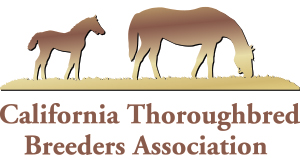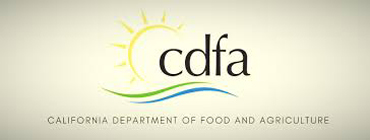From CDFA
SACRAMENTO, Calif. (Apr. 14, 2020) — This guidance is based on what is currently known about the transmission and severity of COVID-19. The California Department of Food and Agriculture, in consultation with the California Department of Public Health (CDPH), will update this guidance as needed and as additional information becomes available.
Local environmental health and public health agencies may have additional guidance and/or requirements regarding these operations in their jurisdiction.
Background
According to the Governor’s Order, essential critical infrastructure workers (https://covid19.ca.gov/img/EssentialCriticalInfrastructureWorkers.pdf ) include those in animal agriculture. Individuals providing care and exercise to ensure the health of and welfare of equines in California are essential workers. Equestrian facilities must prepare for possible impacts of COVID-19 and take precautions to prevent the spread of COVID-19. We are gaining more understanding of COVID-19’s epidemiology, clinical course, immunogenicity, and other factors as time progresses, and the situation is changing daily.
Best Practices Guidelines for Equestrian Facilities
It is necessary to act in a manner that incorporates Governor Newsom’s Executive Orders to prevent the spread of the coronavirus and protect California families and communities. To that end, the CDFA recommends the following:
Facility Access
Restrict access to essential personnel (veterinarians, equine caretakers, trainers and essential owners).
Prohibit non-essential persons (students, friends, family members,etc.) from entering the facility.
Do not allow access to the facility to anyone who shows symptoms of COVID-19, or who has been exposed to a person with symptoms of COVID-19 (cough, shortness of breath, or fever). View the CDC’s COVID-19 symptoms at
https://www.cdc.gov/coronavirus/2019-nCoV/index.html
Limit the number of personnel on the farm at any one time to ensure physical distancing. Use an online sign-up form to limit the number of individuals at the barn at anyone time to no more than 10 individuals.
All individuals must stay 6 feet apart and must not congregate.
All individuals should wear a cloth face covering while on the premises.
Require washing stations or hand sanitizer for all entering and leaving the premises.
Limit on-farm activity to animal husbandry actions necessary to sustain animal health and welfare, namely, grooming, feeding, watering, cleaning of stalls and exercising.
Facility Biosecurity Measures
All individuals entering shall wash hands before entering and wear clean clothes as part of the farm’s general biosecurity plan.
Individuals should touch only the equipment and supplies necessary for completing the tasks of caring for and exercising the specific horse(s).
Prohibit the shared use of helmets, grooming supplies, tack and other equipment between individuals. Any equipment that must be shared should be cleaned and disinfected before and after use.
Keep individual animal waterers and feed bunks in a fixed position within the stall to ensure feed or water can be provided without touching these items or removing them.
Feed pickup and delivery may be delayed during the emergency response. Calculate how much feed will be necessary for your animals and ensure adequate feed is on-hand prior to moving animals in.
When handling shared facilities such as trash receptacle lids, hoses, etc., use good biosecurity practices such as gloves, paper towels, hand-washing or other methods, as appropriate, to avoid transmission.
Cleaning and Disinfection Measures to Prevent COVID-19 Transmission
The virus can persist on non-porous materials (leather bridles/saddles/halters, nylon halters/lead ropes, gate latches, door handles, spray nozzles) longer than porous materials (cotton lead ropes, saddle pads).
o According to the CDC the coronavirus can survive in the air up to 3 hours, on copper up to 4 hours, on cardboard up to 24 hours, and on stainless steel and plastic up to 72 hours.
Clean communal leather tack daily with tack cleaner.
Disinfect gate latches, stall door handles, light switches, feed scoops, hose ends, spray nozzles, cross tie snaps, pitchforks, wheelbarrows and other frequently handled surfaces regularly or after contact with personnel.
The CDC disinfection guidelines for COVID-19 are here:
https://www.cdc.gov/coronavirus/2019-ncov/prepare/cleaning-disinfection.html
A list of approved disinfectants for tougher surfaces (not to be used on leather) is
found here. https://www.epa.gov/pesticide-registration/list-n-disinfectants-useagainst-
sars-cov-2
Although there is no evidence that horses can contract or become ill from OVID-19, practice good hygiene by washing your hands with soap and water for a minimum of 20 seconds or using a >60% alcohol hand sanitizer after
touching a horse, communal areas, or communal equipment to prevent environmental spread of the virus. Hand sanitizer is not as effective as soap and water, so only use when there is no soap and water available and hands are not visibly soiled.
Veterinary Care, Communication and Equine Health
With the shortage of personal protective equipment across the country, veterinarians and veterinary clinics are reducing non-essential visits.
Communicate proactively with the veterinarians to determine how to handle a veterinary emergency under current physical distancing guidelines. Discuss what urgent veterinary healthcare issues may come up during the emergency response period, and how to address them (or postpone them) while adhering to current physical distancing guidelines.
Be proactive with individual animal health and nutrition to prevent disease occurrence.
To prevent illness, horses should be exercised or turned out regularly.
Segregate new animals entering the farm, and any animals showing signs of ilneess such as a fever, nasal discharge, cough, or diarrhea.
Human-to-Animal Transmission (citation: AVMA)
While two (2) dogs (Hong Kong) and one (1) cat (Belgium) have been reported to have been infected with SARS-CoV-2, there is currently no evidence at this point to indicate that privately owned animals spread COVID-19 to other animals or people.
Out of an abundance of caution, it is recommended that those ill with COVID-19 avoid contact with animals until more information is known about the virus. Owners/Animal Caretakers should designate an individual to care for the animal in the event of a COVID-19 illness.
COVID-19 and Barn Safety Poster
https://aaep.org/sites/default/files/images/COVID_19andBarn_%20safety.jpg
Visit the California Department of Public Health website at
https://www.cdph.ca.gov/Programs/CID/DCDC/Pages/Immunization/nCOV2019.
aspx
California’s COVID-19 webpage: https://covid19.ca.gov/


